Change Language :
7 basic rules for a good cable
1. Strain-relieving centre
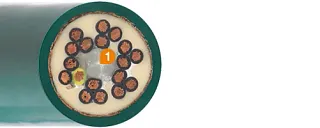
Depending on the number of cores and cross section, a free space forms in the core of a cable. If possible, this should be filled with a genuine core element (and not, as is often the case, with fillers or dummy cores made from waste materials). This provides secure support for the stranded structure above and prevents the stranding from migrating to the centre of the cable.
2. Strands optimised for movement
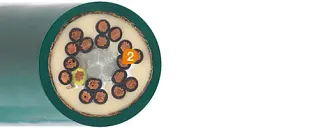
In several series of tests, a coordinated combination of individual wire diameter, pitch length and direction has proven to be the most bend-resistant solution in movement-optimised cables. Single wires that are too thin make for a very flexible cable, but have a strong tendency to kink.
3. Core insulation
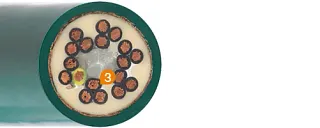
The insulation materials must be designed in such a way that they do not stick together within the cable. The insulation also has the task of supporting the stranded individual wires of the conductor. For this purpose, only the highest quality, high-pressure extruded PVC or TPE materials are used, which have proven themselves in millions of kilometres of cores in e-chains® applications.
4. Structure
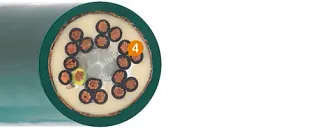
The stranded structure must be stranded with an optimised short pitch length around a strong core with high tensile strength. Due to the insulating materials used, it should nevertheless be flexible within the stranding defined. The cores wound in bundles should be used from 12 cores.
5. Inner jacket
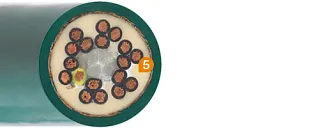
A gusset-filling extruded inner jacket is used instead of inexpensive fleeces, fillers or accessory fillers. This measure ensures that the stranded structure is guided securely in the longitudinal direction. In addition, the stranded structure cannot unravel or migrate. The inner jacket thus serves as a firm foundation for the shield.
6. Shielding
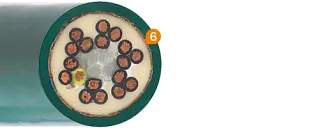
The overall shield should be manufactured tightly with an optimised braiding angle over an extruded inner jacket. Loose, open braiding or even looping considerably reduces the electromagnetic compatibility protection and can fail particularly quickly due to shield wire breaks. A tight overall braided shield provides additional torsion protection for the stranded structure.
7. Outer jacket
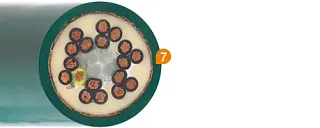
The PVC, PUR or TPE outer jacket can fulfil a wide range of requirements: from UV-resistant to flexible at low temperatures, oil-resistant to cost-optimised. But they should all have one thing in common: a jacket material must be highly abrasion-resistant, must not stick, must be flexible, but should also provide support. In any case, the jacket should also be extruded with pressure (gusset-filling).
Why our product keeps its promises
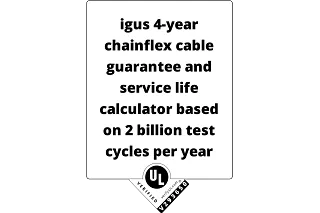
UL verified: chainflex® receives the highest recognition from a globally respected testing organisation
We give a 4-year guarantee on our special cables with a clear conscience, because with over 30 years of experience in our 3,800m² test laboratory and 700 parallel tests, we can make reliable predictions about the service life of our cables.
igus is now the first German company to have this promise validated for chainflex cables. In an elaborate certification process, the US institute "Underwriters Laboratories" confirmed the accuracy of the statement "igus 4-year chainflex® cable guarantee and service life calculator based on 2 billion test cycles per year". This makes the Cologne-based company the first in Europe to have the truthfulness of an advertising statement confirmed by a testing institution. In future, no chainflex cable will leave the factory anywhere in the world that is not labelled with the UL marketing label with its unique number B129699, which refers to igus.
A total of 1044 of the more than 1350 cables in the portfolio and available from stock already have classic UL approval. This is a prerequisite for the smooth commissioning of a system in the USA. The export of systems to America will therefore run smoothly. The combination of UL approval and UL marketing label now doubly ensures smooth export:
Consulting
I look forward to answering your questions

Shipping and consultation
In person:
Monday to Friday from 8:30am - 5.30 pm.
Online:
24h
WhatsApp-Service:
Monday - Friday: 8:30am - 5.30 pm.